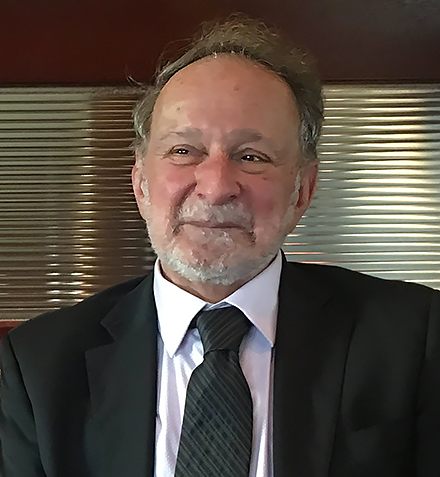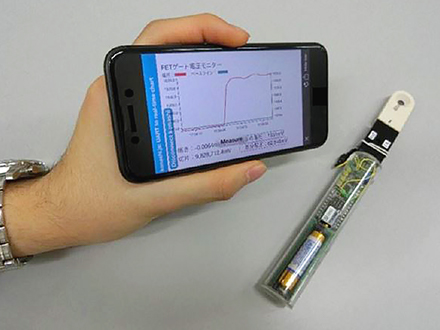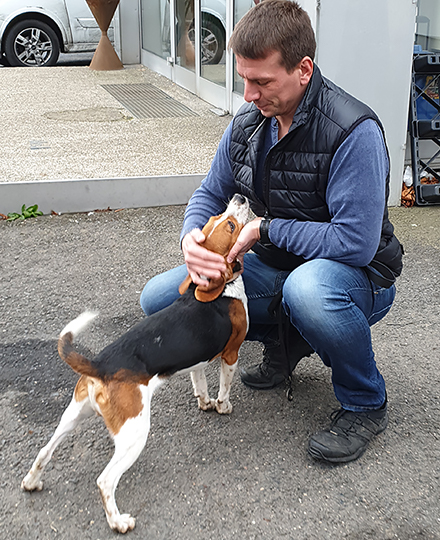A USF interdisciplinary team is working to develop an inexpensive and non-invasive “electronic nose” that can detect virus in an infected person.
TAMPA, Fla. (Sept. 28, 2020) – A team of USF researchers who have been working to create a sensor system that would act as an “electronic nose” to sniff out biochemicals created by the virus that causes COVID-19 has been named a semi-finalist in the XPRIZE Rapid Covid Testing competition.

Sal Morgera, USF College of Engineering
The interdisciplinary team led by USF College of Engineering Professor Sal Morgera is one of several dozen selected from a field of thousands of entries to accelerate the development of high-quality Covid-19 testing that is low cost, easy to use, and fast-turnaround, enabling frequent testing. The XPRIZE competition will narrow the field to finalists in October.
The USF team is working to devleop a sensor that can detect levels of volatile organic compounds (VOC) that are specific to SARS-CoV-2, the virus that caused COVID-19. Dubbed “Bull Nose”, the sensor system would be augmented by additional diagnostics that could detect other neurological and biochemistry changes now known to be caused by COVID-19, Morgera said.
The USF team is developing a small device laden with biosensors that could immediately measure these VOCs much in the same way a field breathalyzer test helps detect alcohol intoxication.
The device would act as an initial screening tool. The USF team also is working to devleop a second technology that in a non-invasive approach could measure changes in the eyes, nose and brain that also are brought on by a SARS-CoV-2 infection.

Conceptual image of the Bull Nose detection device now under development by a USF engineering team. Photo credit: Dr. Sal Morgera.
“In evolutionary terms, the sense of smell is our oldest sense, so it should be no surprise that disease and aroma have been paired since the birth of medical science,” Morgera said.
“A viral infection such as COVID-19 can modify an individual’s aroma as captured by exhaled breath in several ways—by altering the levels or types of microbes in our bodies, by changing the excretion of certain metabolic byproducts from the hormonal system, and through genes that control the body’s immune response.“
Since the COVID-19 pandemic began sweeping the world earlier this year, researchers have been focusing on the unique biochemistry created by the SARS-CoV-2 as it infects the human body. Scientists have found that VOCs detected in the breaths of COVID-19 patients form a unique signature in the concentrations of acetone, isopropanol-1, carbon monoxide, nitric oxide, ethyl butanonate, and other metabolites.
Morgera said the research team asked the question: Can we measure the composition of exhaled breath with the objective of making an accurate decision as to whether the individual has COVID-19?
“Thus far, we have identified the biomarkers that are specific to COVID-19 and developed a prototype that uses exhaled breath, sensors that physically change as they interact with the exhaled breath, and artificial intelligence and machine learning to make a rapid and accurate decision,” he said. “We believe that a noninvasive way to detect medical conditions at an early stage would be of huge societal benefit.”
The “Bull Nose” team includes USF Engineering Professor Stephen Saddow, Associate Professor Arash Takshi and PhD student Tiffany Miller; and USF Muma College of Business Professor Matthew Mullarkey, an expert in information systems. In developing one of the more unique aspects of the technology, the team is partnering with Georgia-based working and detection dog firm Valhall K-9 International. Human breath analyst specialists Daniel Sanders and Thomas Wortelmann from Dortmund, Germany, round out the team.

(L to R) Stephen Saddow from the USF College of Engineering, Associate Professor Arash Takshi, Matthew Mullarkey from the USF Muma College of Business, and Engineering PhD student Tiffany Miller
In perhaps one of the most ambitious aspects of the proposal, the team has partnered with Peter Schnurrer and Matthew Palm of Valhall K-9 International, one of the world's top trainers of detection dogs, to develop technology that would enhance a dog’s already superior sense of smell to detect those same VOCs. Such an approach would allow detection dogs to help provide disease surveillance in places like airports or public events where disease outbreaks can begin.
"We are dedicated to helping to solve a global problem. By working with the USF research team, we believe the solution will be a repeatable, scalable and sustainable solution while simultaneously discovering a new layer of detection capabilities for canines,” said Schnurrer, Valhall’s president. “We are excited to marry man’s oldest asset with new innovative technology. We take a science-based approach to our training and believe partnering with a leading research university was the best way to progress our industry."

Valhall President Peter Schnurrer works with Red, a beagle who is a trained detection dog. Scientists are in the early stages of exploring whether detection dogs can be helpful in sniffing out COVID-19.
Earlier this summer, the XPRIZE Rapid Covid Testing competition called on the world’s brightest and most innovative minds to develop low-cost testing solutions that range from testing devices with 15-minute results to “next morning” results. Stemming the spread of the highly-contagious virus has been hampered both nationally and worldwide by a lack of rapid, inexpensive testing that can be deployed to stop outbreaks before they happen.
The XPRIZE Rapid Covid Testing aims to scale testing capabilities by 100-times past the current standard, the level of increase needed to more safely return to everyday activities. To amplify the impact of the six-month XPRIZE competition, a $50 million “COVID Apollo Project” led by experienced life sciences investors and companies will work with OpenCovidScreen, the XPRIZE community, and beyond to accelerate the best ideas, technologies, and innovations to market and scale them.
Finalists will be announced in the coming weeks, and will then be asked to send their testing kits and protocols to two separate, independent laboratories for clinical validation. The top five performing teams will evenly split $2.5 million in total—$500,000 each—before advancing to the final round.
Each of the top five teams will be assigned to one of five pilot test sites around the United States for 60 days in order to demonstrate the effectiveness of their testing solutions in a real world scenario. Judges will then review each team’s results. In January, XPRIZE will award a final prize of $500,000 to each team that meets the criteria, totalling another $2.5 million if all teams are successful.
Read more about Dr. Morgera’s research into developing computer systems that mimics human systems in this 2019 story from WUSF: Building Biologically-Inspired Software.